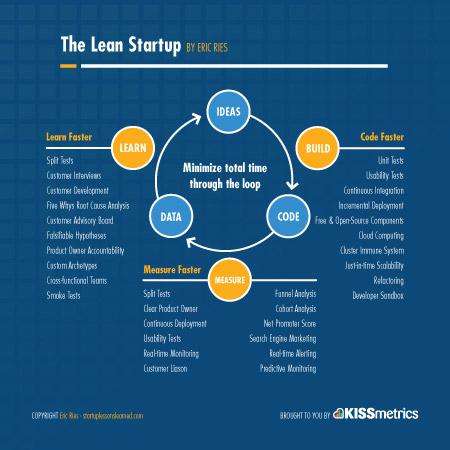In the dynamic realm of entrepreneurship, startups face a complex landscape marked by rapid innovation and fierce competition. As new players continuously emerge, the ability to devise effective strategic approaches becomes crucial for survival and growth. This article explores the multifaceted strategies that startups can employ to navigate market competition successfully. From leveraging unique value propositions to embracing adaptive business models, we will examine how both established principles and innovative tactics can empower startups to differentiate themselves in crowded markets. By understanding the competitive landscape and implementing strategic frameworks, entrepreneurs can not only position their ventures for immediate success but also ensure long-term sustainability in an ever-evolving business environment.
Table of Contents
- Market Analysis and Competitive Landscape Assessment
- Differentiation Strategies to Stand Out in a Saturated Market
- Building Strategic Partnerships for Enhanced Market Penetration
- Utilizing Data Analytics to Drive Informed Decision-Making
- In Conclusion
Market Analysis and Competitive Landscape Assessment
Understanding the current market dynamics is crucial for startups looking to position themselves strategically amidst established competitors and emerging disruptors. A thorough analysis involves examining key market trends, customer preferences, and behavioral shifts that influence purchasing decisions. By leveraging market research tools and consumer feedback, startups can identify gaps in the market that offer lucrative opportunities otherwise overlooked by larger players. This comprehensive approach not only aids in product development but also informs marketing strategies tailored to resonate with target audiences.
In assessing the competitive landscape, startups should conduct a SWOT analysis to uncover their strengths, weaknesses, opportunities, and threats. This framework allows for a clearer understanding of competitive advantages and potential pitfalls. Additionally, evaluating competitor strategies can reveal valuable insights into pricing structures, service offerings, and customer engagement tactics. Utilizing a benchmarking strategy, startups can delineate their performance metrics against industry standards, ensuring they remain agile and responsive. Below is a simplified representation of a SWOT analysis tailored for a hypothetical startup:
| SWOT Element | Description |
|---|---|
| Strengths | Innovative technology, Agile development processes |
| Weaknesses | Limited market presence, Smaller resource pool |
| Opportunities | Emerging markets, Increasing demand for sustainability |
| Threats | Intense competition, Rapid technological changes |
Differentiation Strategies to Stand Out in a Saturated Market
In a crowded marketplace, startups must adopt innovative differentiation strategies to carve out a niche. Identifying a unique selling proposition (USP) is fundamental; this could be a distinctive feature of your product, exceptional customer service, or a novel pricing model. By understanding what potential customers value most, you can tailor your offerings to meet those needs while standing out from competitors. Additionally, leveraging branding and storytelling can significantly enhance your appeal. Develop a compelling narrative around your brand that resonates emotionally with your audience, making them feel connected and inclined to choose you over others.
Another effective approach is to focus on customer experience. Providing an unparalleled user experience can differentiate your startup, leading to customer loyalty and word-of-mouth referrals. This includes optimizing your website, ensuring seamless transactions, and offering personalized communication. Implementing feedback loops to continually refine your product based on customer input is essential. Such practices not only improve retention rates but also attract new customers through positive reviews and testimonials. Below is a simple comparison table illustrating different approaches to stand out:
| Strategy | Description | Benefits |
|---|---|---|
| Unique Selling Proposition | Highlighting a distinct feature or service. | Sets you apart from competitors. |
| Branding & Storytelling | Building an emotional connection through your brand’s story. | Enhances customer loyalty. |
| Exceptional Customer Experience | Providing a seamless and engaging interaction. | Boosts word-of-mouth referrals. |
| Feedback Loops | Regularly incorporating customer feedback into development. | Ensures continuous improvement and satisfaction. |
Building Strategic Partnerships for Enhanced Market Penetration
In today’s competitive startup landscape, forging productive alliances can be a game-changer. Strategic partnerships allow businesses to leverage each other’s strengths, leading to enhanced market penetration and accelerated growth. By collaborating with companies that complement their offerings, startups can not only improve their service delivery but also tap into new customer bases. Key benefits of such partnerships include:
- Access to Resources: Sharing tools, technology, and expertise reduces operational costs.
- Expanded Customer Reach: Partners can introduce each other to their client networks.
- Co-marketing Opportunities: Joint marketing campaigns can amplify visibility and brand recognition.
To maximize the efficacy of partnerships, it’s essential to identify and cultivate relationships with the right allies. Startups should focus on organizations that share similar values and target audiences, ensuring a mutually beneficial arrangement. Effective strategies to consider include:
| Strategy | Description |
|---|---|
| Networking Events | Participating in industry conferences to meet potential partners. |
| Joint Ventures | Creating new products or services together to share costs and risks. |
| Referral Partnerships | Establishing a system to refer clients to each other for mutual benefit. |
Utilizing Data Analytics to Drive Informed Decision-Making
In today’s fast-paced startup environment, the ability to leverage data analytics can significantly enhance decision-making processes. By systematically gathering and analyzing data, startups can gain insights into customer behavior, market trends, and operational performance. This empowers them to make informed choices rather than relying on intuition alone. Key areas where data can be transformative include:
- Customer Segmentation: Tailoring marketing efforts based on demographic, geographic, and psychographic data.
- Performance Metrics: Monitoring key performance indicators (KPIs) to assess business health and efficiency.
- Competitive Analysis: Analyzing competitors’ strengths and weaknesses through market data.
Additionally, incorporating data analytics into strategic planning allows for proactive responses to emerging challenges. Utilizing data visualization tools can aid in interpreting complex data sets, making it easier for teams to communicate insights and align on strategic initiatives. For instance, a well-structured dashboard might present real-time sales data alongside customer feedback. An illustrative table of insights could be as follows:
| Metric | Current Rate | Target Rate |
|---|---|---|
| Customer Retention | 70% | 85% |
| Market Penetration | 15% | 25% |
| Sales Growth | 10% YoY | 20% YoY |
By tapping into these comprehensive analyses, startups can navigate the complexities of market competition more effectively, ensuring that every decision made is backed by solid evidence and tailored to meet the organization’s goals.
In Conclusion
navigating the complex landscape of startup market competition requires a multifaceted strategic approach that combines innovation, adaptability, and data-driven decision-making. As the entrepreneurial landscape continues to evolve, startups must remain vigilant and responsive to market dynamics, customer needs, and emerging trends. By leveraging strategic frameworks, fostering a culture of agility, and embracing collaboration, entrepreneurs can position their ventures for sustained growth and competitiveness. Ultimately, the key to success lies not only in understanding the competition, but also in anticipating market shifts and proactively crafting solutions that resonate with consumers. As you embark on your journey, remember that the path to success is often defined by the strategies you employ today—so choose wisely, and let your vision guide you through the challenges ahead.






